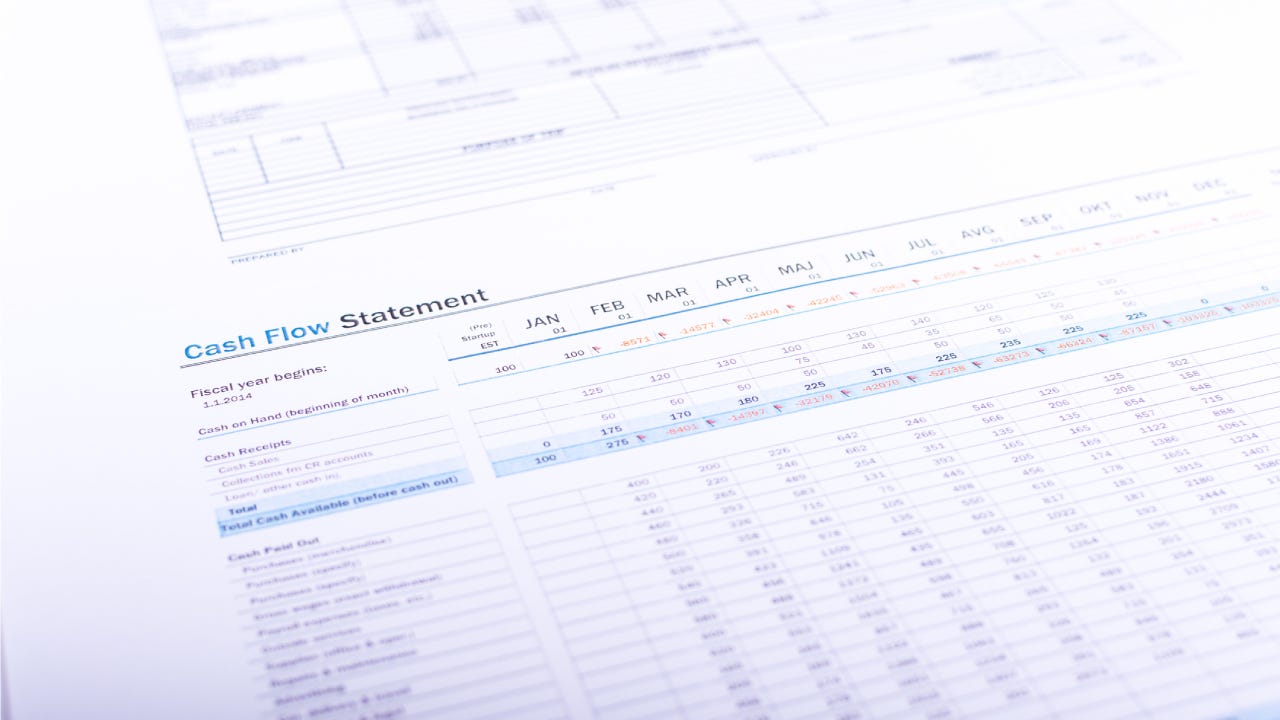What is EBITDA and how is it valuable?

The Bankrate promise
At Bankrate we strive to help you make smarter financial decisions. While we adhere to strict , this post may contain references to products from our partners. Here's an explanation for .
EBITDA is an accounting term that stands for “earnings before interest, taxes, depreciation and amortization.” Some investors and analysts use EBITDA to assess the operating performance of a business or as a broad measure of its cash flow.
Here’s how to calculate EBITDA, what it means and some drawbacks of using it in company analysis.
Components of EBITDA
EBITDA is often used by companies, investors, lenders and others to evaluate the performance of a company. EBITDA measures a company’s operations without considering the impact of debt financing, capital structure, depreciation, and taxes, in order to present the broadest measure of a company’s cash flow. Of course, many of these items are real costs that investors should consider in their analysis.
The main components of EBITDA are:
- Net earnings
- The bottom line – the company’s profit – after paying off all interest expenses, taxes, reinvesting in the business and paying employees and suppliers.
- Interest
- This is the cost of any money that the company has borrowed, such as by issuing bonds.
- Taxes
- Taxes are any costs associated with paying local, state and federal authorities on the profit generated by the business.
- Depreciation
- Depreciation is the cost of the company’s fixed assets allocated over time. Most assets depreciate over their lifecycle as they become obsolete or wear out.
- Amortization
- Amortization is the cost of a fixed intangible asset over time. Intangible assets are things like a brand name or intellectual property.
So EBITDA takes net earnings and then adds back each of the other elements, arriving at a broad measure of the company’s cash flow.
A company’s EBIT is also known as its operating earnings, which includes the expenses to run its business but not any associated financing costs (i.e. interest expense) or taxes. So EBITDA can also be calculated by adding back depreciation and amortization expenses to operating income.
Why companies use EBITDA
EBITDA is used in a variety of ways by different stakeholders in a business, and can be useful as a common measure of the company’s performance:
- Lenders: Lenders may use EBITDA as a way to measure how much cash flow is available to make debt payments.
- Investors and stock analysts: These groups may use EBITDA as the basis of valuation measures such as enterprise value divided by EBITDA, or to see how indebted a company is relative to its earnings power. It also is used to compare companies with one another.
- Company managers: Managers may use EBITDA to understand how much cash flow they have available before making decisions about reinvestment, debt issuance and redemption and other capital allocation decisions.
However, EBITDA can be a deceptive tool and may not represent a company’s true profitability.
The drawbacks of EBITDA
While EBITDA is often used to gauge a company’s cash flow, it has some serious drawbacks and is often a misleading measure of cash flow. Legendary investor Warren Buffett once quipped that EBITDA really stands for “earnings before I think to do anything.”
EBITDA is not a generally accepted accounting principle (GAAP)
EBITDA is not officially recognized under GAAP and is not used as an official measurement by many companies. In practice, this means that companies may have different definitions of EBITDA and some may make further adjustments such as adding back “one-time” expenses to the calculations, making a company look more profitable than they actually are.
For example, adjusted EBITDA often includes “one-off” expenses that most people would consider operating expenses, such as one-time legal fees, stock-based executive compensation, and other employee expenses. As such, using EBITDA or “adjusted EBITDA” can make a company look more profitable than it really is.
EBITDA fails to consider financing
Some experts consider EBITDA to be a useless metric because it does not take into account the company’s debt expenses. EBITDA measures a company’s performance before factoring in how it’s financed, so using this metric alone may provide a less than complete view of the business.
For example, two companies may have the same EBITDA, but one uses much more debt financing than the other, resulting in a significantly higher interest expense. While they may have the same EBITDA, after-tax profits will be very different because of the debt.
EBITDA fails to consider tax impacts
As its name suggests, EBITDA does not account for tax expenses. So the metric does not include any amount of tax paid by the company, which can impact its profitability, of course.
EBITDA does not consider reinvestment
By adding back depreciation and amortization, the EBITDA calculation effectively fails to consider how a business needs to continually reinvest in fixed assets to keep its business competitive. While a business may be able to skimp on investments for a few years during lean times, it eventually has to reinvest in its assets in order to remain a going concern.
In addition, EBITDA can make companies in different industries look similarly profitable when they’re not. For example, industries such as manufacturing that require high reinvestment in fixed assets may not be accurately compared to “people-centric” businesses that don’t require the same level of reinvestment. By excluding the depreciation and amortization components of the calculation, EBITDA obscures the very different capital reinvestment needs of those companies.
Bottom line
EBITDA is a metric that may help investors and others gain valuable insights into a company’s performance. However, they must also be aware of EBITDA’s drawbacks and shortcomings. Free cash flow and operating cash flow should also be considered to understand a business’ true profitability and performance.
Related Articles



